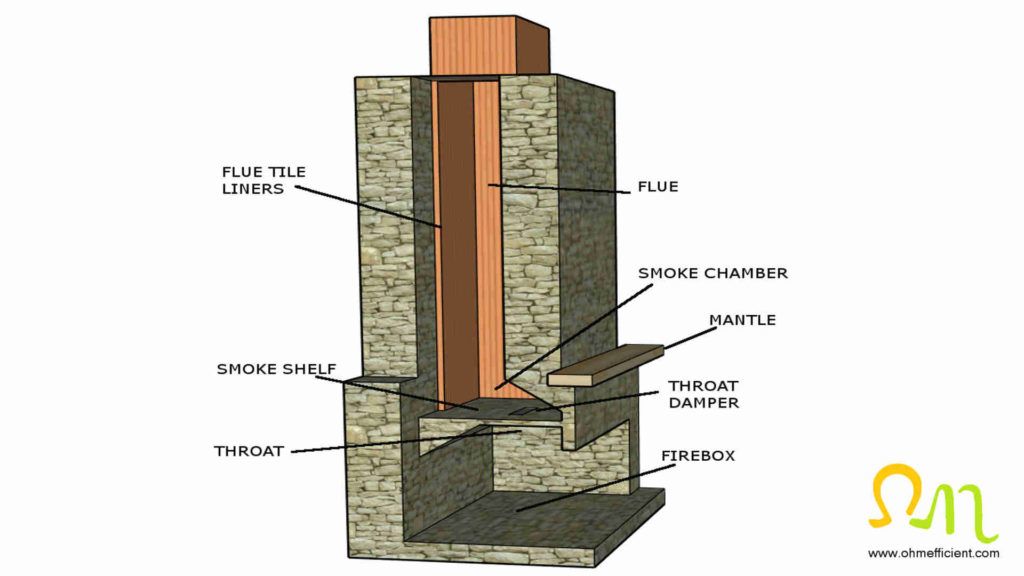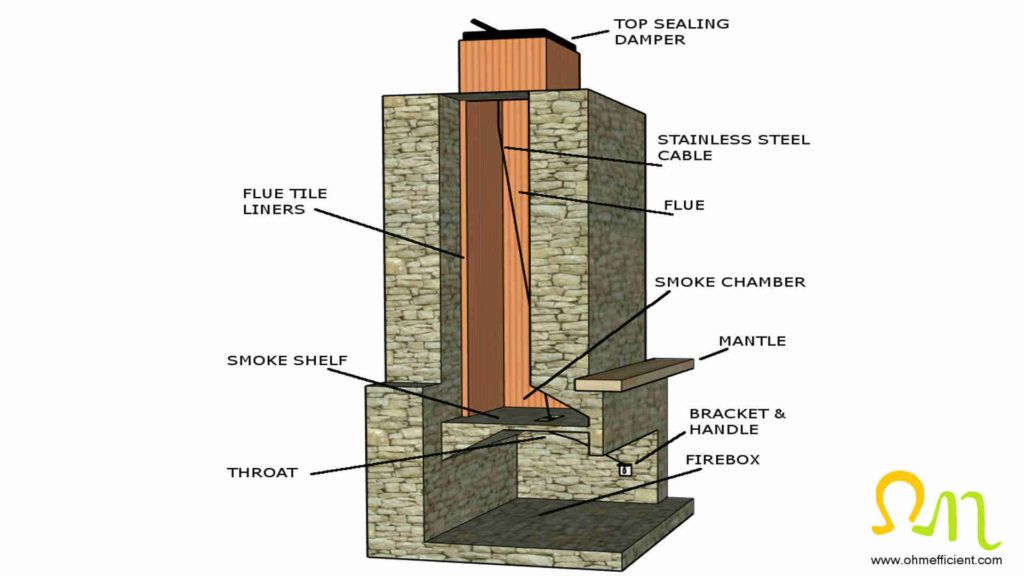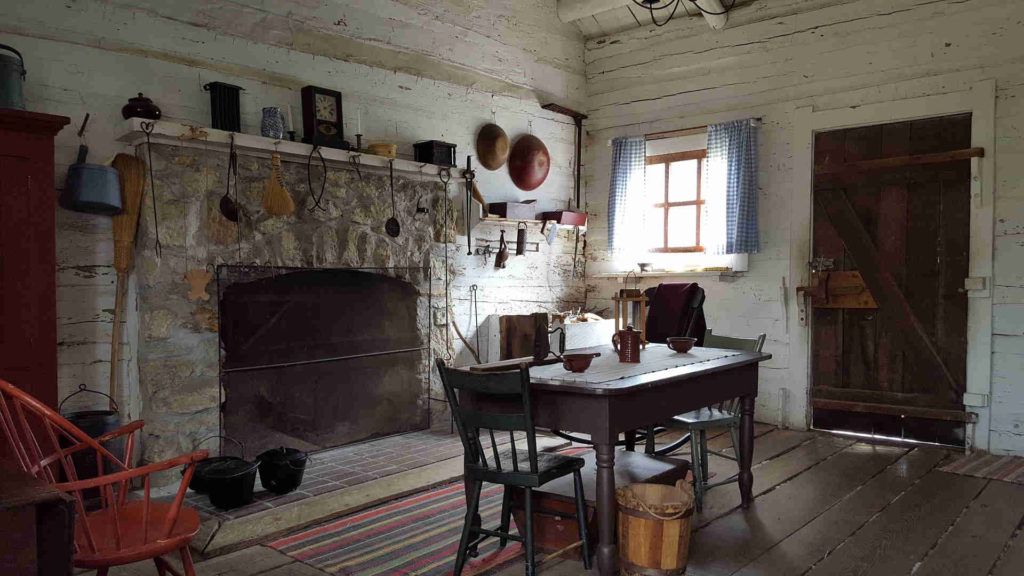This article explains how to install a top sealing damper on a wood burning fireplace chimney to increase energy efficiency as well as lower utility bills.
Chimneys naturally exhaust air in an upward movement from the fireplace to the outdoors. This air draft exhausts heat and smoke while you are using your fireplace. Unfortunately, conditioned air from the home continues to escape up the chimney to the outdoors while the fireplace is not in use. This is extremely inefficient and is comparatively akin to leaving a window cracked open all winter long.
Throat damper
Most fireplaces have a cast iron throat damper installed directly above the firebox. The purpose of these dampers is to isolate the tempered indoor air from the unconditioned outdoor air while the fireplace is not in use. Opening these dampers before creating a fire within the fireplace allows for heat and smoke to exhaust up the chimney flue. Designing fireplaces with these dampers directly above open flame, therefore requires the damper to be able to withstand high temperatures. The problem with this is that the throat damper seal is basically a metal plate resting on a metal casing. Therefore, conditioned air from inside the home, easily seeps through the metal to metal seal and escapes up through the chimney. Additionally, these cast iron dampers rust and warp with time. If these dampers have either rust holes or warping, more conditioned air will escape, further reducing efficiency.

Top sealing damper
The solution to inefficient throat dampers or no damper at all is to install a top sealing damper. As the name implies, these dampers install outdoors on top of the chimney flue. A bead of silicone adhesive seals the damper to the top of the chimney flue. These dampers are either aluminum or stainless steel and therefore they will not rust like cast iron throat dampers tend to. A fire resistant silicone rubber gasket seals the damper when it is in the closed position. The silicone rubber gasket reduces air loss through the chimney by as much as 90%.



Top sealing damper installation instructions
- Bolt the cable guide to the top sealing damper
- Secure a ladder to gain access to roof and chimney flue
- Carry the top sealing damper as well as the silicone adhesive to roof
- Clean the flue liner and top sealing damper
- the flue liner must be dry before installation of the top sealing damper
- make sure the damper spring hangs freely from the lid when the damper is closed
- lower damper cable down chimney to the fireplace opening below
- Install the handle bracket in the firebox
- use a 1/4 inch Masonry Drill Bit to drill a 1 inch deep hole to mount the handle bracket (only use a masonry drill bit, other drill bits can cause the brick to crack)
- mount the bracket near the front of the firebox about 20 inches above the firebox floor
- insert a nail anchor into the top hole of the handle bracket and use a hammer to secure it to the firebox
- drill the second hole after the handle bracket is attached to the firebox and the second nail anchor
- Install cable handle
- place the cable through the bracket and pull until a slight tension can be felt (damper should be closed)
- slide the brass lug up the cable and secure it 1/2 inch above the bracket using the provided Allen wrench
- close the top sealing damper by pulling down on the handle and placing the brass lug under the bracket
- Return to roof to check that the top sealing damper has a tight seal
- if the damper does not have a tight seal, return to the firebox and re-position the brass lug upward to get a tighter seal
- cut off excess cable inside firebox using wire cutters
Additional benefits top sealing dampers provide
- Top sealing dampers eliminate the possibility of soot odors from within the chimney from occasionally entering the home. With throat dampers or no damper, soot smells can down draft into the home during windy days.
- Top sealing dampers serve as a chimney cap when they are closed. This keeps out rain and prevents animals such as birds or rodents from entering your chimney and home.
- Additionally, top sealing dampers help reduce outside noise levels within the home.
Conclusion
Installing a top sealing damper prevents conditioned (heated) air from escaping up the chimney. Your energy consumption and energy bills will be lower as a result of this simple installation. Top sealing dampers come in a variety of shapes and sizes to match standard chimney flue dimensions.
Parts and tools required
Top Sealing Damper Kit
1/4 inch Masonry Drill Bit
Hammer Drill
Hammer
Wire Cutting Pliers
Damper kit includes
- Damper assembly: damper, spring, cable, brass lug
- Fireplace bracket and handle
- Mounting silicone adhesive tube
- Hardware (nail anchors)
- Allen wrench

